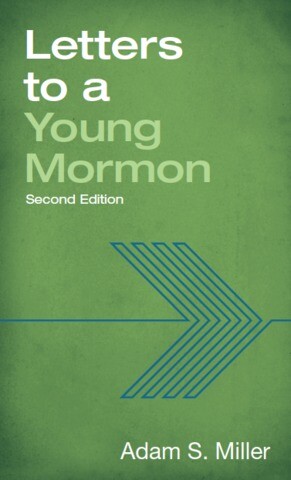Dear S.,
Early in section 132 of the Doctrine and Covenants, a well-known passage from the Gospel of John gets repeated, but with a twist. The passage reads: “This is eternal lives—to know the only wise and true God, and Jesus Christ, whom he hath sent” (D&C 132:24; compare John 17:3). The difference is small but compelling. Where John speaks of eternal life, section 132 speaks of “eternal lives.” What does it mean to be “eternal”? And why does “life” get changed to “lives”?
We might say that an eternal life is a life that lasts forever. But if you live forever in hell, that seems to miss the point. To have any weight, the “eternal” in “eternal life” has to amount to something more than a really long time.
In 1830, Joseph Smith and Martin Harris were told some surprising news about hell. It’s true that the scriptures talk about sinners receiving eternal punishment, but, the Lord cautions, this doesn’t mean that their punishment is going to last forever. As the revelation puts it, “it is not written that there shall be no end to this torment, but it is written endless torment” (D&C 19:6). Putting endless torment in italics frames these words in scare quotes. The italics say: these words don’t mean exactly what you think they mean. But if the “endless” torment spoken of isn’t really endless, then why call it “endless torment”? Because, the revelation says, if God puts it this way, then “it is more express than other scriptures, that it might work upon the hearts of the children of men, altogether for my name’s glory” (D&C 19:7).
► You'll also like: A Letter All Mormons Need to Read Before (and After) Entering the Temple
But then the revelation shifts gears and Joseph and Martin are given a peek at what the word eternal might really mean. “I will explain unto you this mystery,” God says (D&C 19:8). “For, behold, I am endless, and the punishment which is given from my hand is endless punishment, for Endless is my name. Wherefore—Eternal punishment is God’s punishment. Endless punishment is God’s punishment” (D&C 19:10–12). God doesn’t intend the “eternal” of “eternal punishment” to be read as a description of how long the punishment is going to last. He intends it, borrowing on his name, to shorthand something about the quality of the punishment promised. Eternal punishment names the kind of punishment that comes from the hand of the Eternal One. And, more, eternal punishment is the kind of punishment that, on the cross, God himself suffered on our behalf: “For behold, I, God, have suffered these things for all, that they might not suffer if they would repent” (D&C 19:16).
If eternal punishment is God’s kind of punishment, then we might, as others have, try this same reading of eternal life. Eternal life is God’s kind of life. Rather than just measuring a lifespan, “eternal” names a certain way of being alive, a certain way of holding life as it passes from one moment to the next. Life itself involves the passage of time, and in order to be faithful to it, we must bless rather than dam that flow. We must do as God does and allow the world and our parents and our children and ourselves to grow and change and die and start again. In heaven, all the world’s many parts continue moving. Being sealed to those we love doesn’t seal them off from change. Rather, it binds us to them as, in their living, they never cease to change.
In this sense, we might read the law of consecration as a name for God’s own way of holding life as it passes. When we promise to live the law of consecration, we promise to dedicate all our time, talents, and resources to the work of building the kingdom of God. In other words, we promise to take everything we’ve been given and, of our own free will, hand it back wholesale to God. The law of consecration is an open hand. It is a certain way of receiving with open hands what God gives and returning with open hands all of the same. The law of consecration is a way of saying “yes” rather than “no” to the costs of life.
► You'll also like: A Powerful Letter to Young Mormons About Sex and What They Need to Understand
Have no doubt, these costs are high. Each of us will sacrifice everything. We will lose everyone and everything and every place we’ve ever been given. Even if we stay put and stay together, neither we nor they will stay the same. All of it will change, and all of it will pass into what comes next, and there is no going back. The question is, will we greet this passing with a closed fist and a hard heart or with an open palm and a consecrated life?
What, then, is eternal life like? It’s like this. It’s like now. Eternal life is always for now and never for later. (Even when I have it later, that “later” will still be my “now.”) Eternal life is a certain way of holding in our hands the hunger of a human life. It is a certain way of doing whatever you’re already doing. Eternal life is just like doing what you’re doing right now, but doing it the way God himself would do it.
If your life seems too small and too weak to manage such a thing, you’re not alone. But, in the end, that’s the point: you’re not alone. Remember how section 132 changes “eternal life” to “eternal lives.” Every life is plural, and as a merciful result, you are never quite done and never quite your own. You will live many lives. And if you give yourself to this work, you’ll find that, already, God is at work in you. Already, without your having seen, God was in there, a second life inside your life, bearing you up, giving you breath, and putting light in your eyes. Life itself depends on your filling and being filled with lives that are not your own.
Marriage will help you see this clearly. When you’re sealed in the temple, you’ll leave your old life on God’s altar, and you’ll go home with two. Your life, like loaves and fishes, will be blessed and multiplied. You’ll grow close, but the differences will remain. Things about your partner that used to be strange will become familiar, and things about them that used to be familiar will become strange. The person you love will always be, in part, a mystery. Love seals you together in the gathering intimacy of this inscrutability. If your love lasts, it will last because instead of running from this strangeness, you share it. The intimacy of this strangeness, though trying, is what turns the loneliness of one eternal life into the joy of many.
When she was four, my wife sliced open her left index finger with a carving knife. She was, ambitious, trying to chop up some raw carrots while her mother wasn’t looking. Her finger bled and bled, and to this day it bears a wicked, hook-shaped scar. Sometimes, when I hold her hand, I feel for that scar. The other day I caught myself absently rubbing that same spot on my own hand, feeling for the ridge of that scar, and wondering where it was.
This same, strange intimacy will color your other relationships, though less vividly. You may see it with your parents and your children and your friends. You may see it with the church too. Sometimes, at church, you’ll feel like a stranger wandering in a strange land. Who are these people, you’ll ask, and what could you possibly have in common? In this sense, being a Mormon is not so different from being married. Sometimes when you go to church you’ll see eye to eye, the pieces will fit, and you’ll feel at home. But sometimes you’ll just wonder and stare. Living an eternal life doesn’t depend on your feeling either at home or estranged. It depends, instead, on a certain way of holding them together. Tides change, but however you happen to feel, consecrate all these feelings back to God.
What are eternal lives like? They’re just like this. They’re like disagreeing with your wife. They’re like doing the dishes with your husband. They’re like reading to your kids. They’re like going to work or mowing the lawn. They’re like sitting in a chair. They’re like sleeping through the night or getting up before dawn. They’re like visiting your mother. They’re like eating a cookie. They’re like being born and getting old. They’re like dying.
What are eternal lives like? They, dear S., are like you.
Love,
A.
Lead image from lds.org
Get more inspiring advice and insights from Adam Miller in Letters to a Young Mormon.
This book is composed as a series of letters. The letters are meant for a young Mormon who is familiar with Mormon life but green in his or her faith. The author, philosophy professor Adam S. Miller, imagined himself writing these letters to his own children. In doing so, he struggled to say his own piece about what it means to be—as a Mormon—free, ambitious, repentant, faithful, informed, prayerful, selfless, hungry, chaste, and sealed.
The letters do little to benchmark a Mormon orthodoxy. That work belongs to those called to it. Here, Miller's work is personal. He means only to address the real beauty and real costs of trying to live a Mormon life and hopes to show something of what it means to live in a way that refuses to abandon either life or Mormonism.
This second edition of Letters to a Young Mormon includes all the content of the original, well-loved book, with added chapters on the Sabbath and stewardship, as well as a new preface by the author, which provides additional framing and context for his writing.



